"Karakurt" on Lake Ladoga
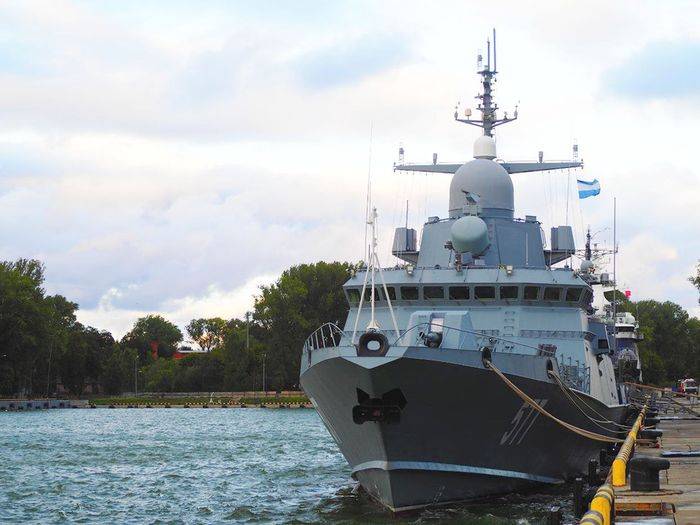
MRK "Sovetsk" project 22800 "Karakurt"
Area of responsibility of the Twice Red Banner Baltic fleet The Russian Navy covers the Baltic and North Seas, as well as the surrounding areas of the Atlantic Ocean. In addition, ships and coastal formations of the DKBF can operate in other waters and navigation theaters, and such issues are studied on a regular basis. Thus, recently several small missile ships conducted experimental combat duty on Lake Ladoga, which has its own advantages and important features.
Experimental combat duty
On October 13, the newspaper of the Ministry of Defense “Red Star” published the material “On Gray Ladoga”. For the first time, it openly reported on the experimental combat deployment of ships of the Baltic Fleet on Lake Ladoga. The commander of one of the ships involved told the details of these events and his personal impressions.
Two small missile ships of project 22800 "Karakurt" from the DKBF - "Sovetsk" and "Odintsovo" - were assigned to duty on Ladoga. The ships made the transition from their permanent base through the Gulf of Finland and the Neva. During experimental combat duty, their temporary base was one of the Ladoga ports, which was used by the fleet until 2004. The duty lasted for a month.
The commander of the Sovetsk, in an interview for Krasnaya Zvezda, noted that for the first time the passage along the Neva was carried out independently and without the help of tugs. The solution to such a problem was not simple. Unlike other domestic river-sea class ships, MRK pr. 22800 have limited capabilities for operating on rivers and shallow waters in general. Despite this, two “Karakurt” successfully covered the given route.
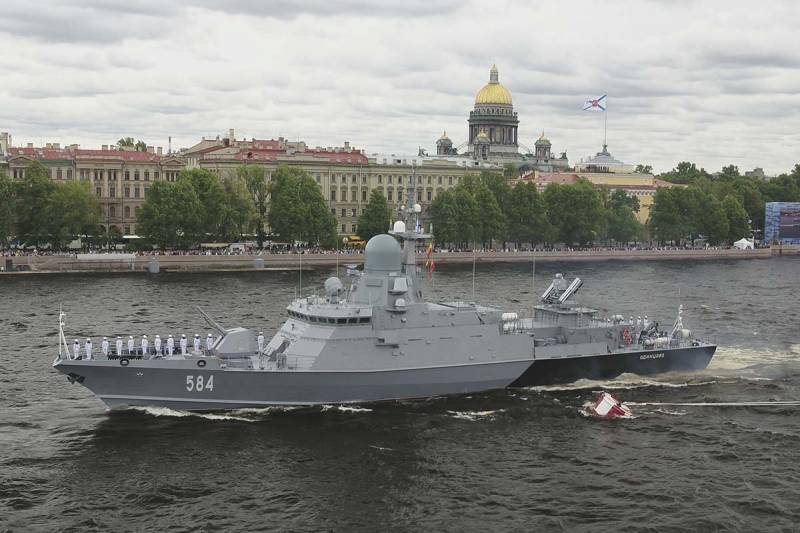
Ship "Odintsovo"
The crews of the two ships mastered the new theater of navigation and studied it from a navigational and hydrographic point of view. At the same time, the sailors had to get used to new conditions. Thus, Lake Ladoga exceeds the Baltic Sea in depth - in some areas by several times. The great depth allows you to operate freely off the coast without fear of shoals. In addition, the Sovetsk commander paid special attention to the northern part of Ladoga, where there are real skerries.
After a month of experimental combat duty, setting up a base point, performing training tasks, etc., the ships left Lake Ladoga for their permanent base. Whether this practice will be continued has not yet been clarified.
Goals and objectives
As Krasnaya Zvezda writes, the recent experimental combat duty of two RTOs pursued several main goals related to issues of tactics, technology and operation. In all cases, it was possible to obtain the necessary experience for further analysis and conclusions, as well as for drawing up and adjusting plans for the future.
First of all, as part of recent events, the DKBF tested the possibility of transferring ships to remote waters. Despite all the obvious advantages, the Baltic Sea and its naval bases are open to a potential enemy and are subject to known risks. In turn, Lake Ladoga is not directly accessible to third countries. In addition, this theater is covered by air defense systems and is protected from attack from the water.
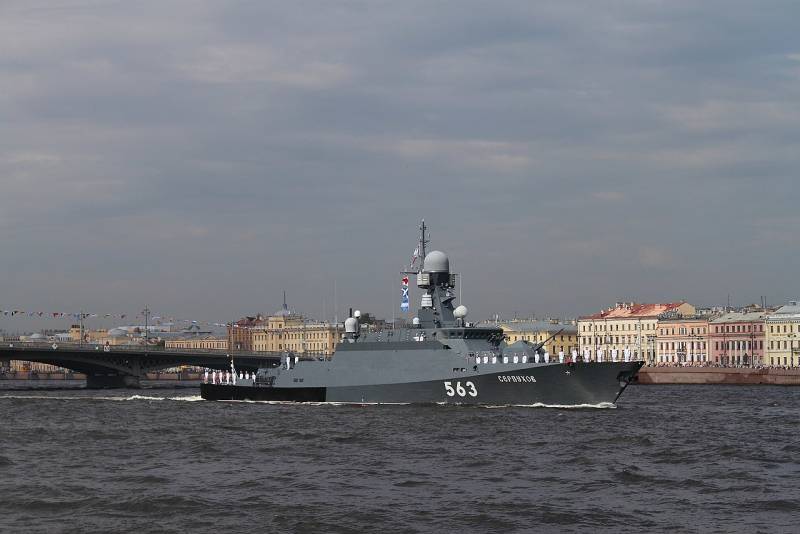
MRK "Serpukhov" pr. 21631
It is noted that the withdrawal to Ladoga has virtually no effect on the combat potential of the ships. Main weapons The Karakurt MRK and a number of other modern domestic pennants are Caliber cruise missiles. They have a range of approx. 2,5 thousand km, and moving the launch boundaries to inland waters does not have a fundamental impact on the affected area.
As part of the experimental combat duty, issues of a technical and operational nature were worked out. Thus, the behavior of ship hulls designed for the sea in fresh water was tested. The nuances of using satellite communications and other systems were clarified, taking into account the specifics of the region and theater. Finally, the potential of the selected lake base was tested from the point of view of the operation of modern RTOs.
Experience of the past
It should be recalled that our Navy has extensive experience in the development and military use of Ladoga. This process began in the late thirties, during the Soviet-Finnish War. So, in 1939-40. The Ladoga military flotilla was formed and built, which successfully operated until the end of the Great Patriotic War.
In the post-war period, the Baltic Fleet continued to use Lake Ladoga. Various objects and units of the Navy were located on its banks. In addition, the port of Lakhdenpokhya in the northwestern part of the lake served as a temporary base for ships, boats and submarines. In addition, the waters of Ladoga were used as testing grounds for various experiments and tests.
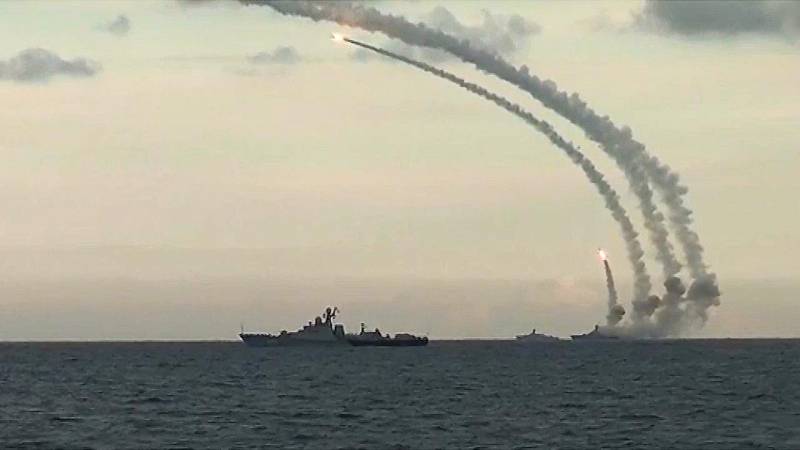
"Buyan-M" performs a salvo launch of "Caliber" missiles
Active operation of the Lakhdenpokhya base ceased at the beginning of the XNUMXs. However, the port and its main structures were preserved. It is likely that they were used by two new MRKs during their recent test combat duty. At the same time, it cannot be ruled out that the base needs serious repairs and restoration after a long period of inactivity. Based on the results of these activities, she will be able to fully solve all her problems.
Geography and fleet
Lake Ladoga has a number of obvious advantages that DKBF can use. First of all, you need to remember that Ladoga is the largest lake in Europe. It measures 219 x 125 km and has a surface area of approx. 17,9 thousand sq. km. The average depth reaches 50 m. The length of the coastline is 1570 km. The lake is entirely located on Russian territory, but is connected via the Neva to the Gulf of Finland and the Baltic Sea.
Due to geographical and hydrological features, ships and submarines of different classes and types can be stationed on Ladoga, although with certain restrictions. These opportunities were actively used in the past, and now DKBF is returning to such ideas. The first experiments were carried out, demonstrating the fundamental possibility of deploying modern ships.
During a recent test combat duty on Ladoga, two small missile ships of Project 22800 were stationed for a month. The Baltic Fleet now has three such pennants. Four more Karakurts are at various stages of construction and testing. They will begin service within the next few years.
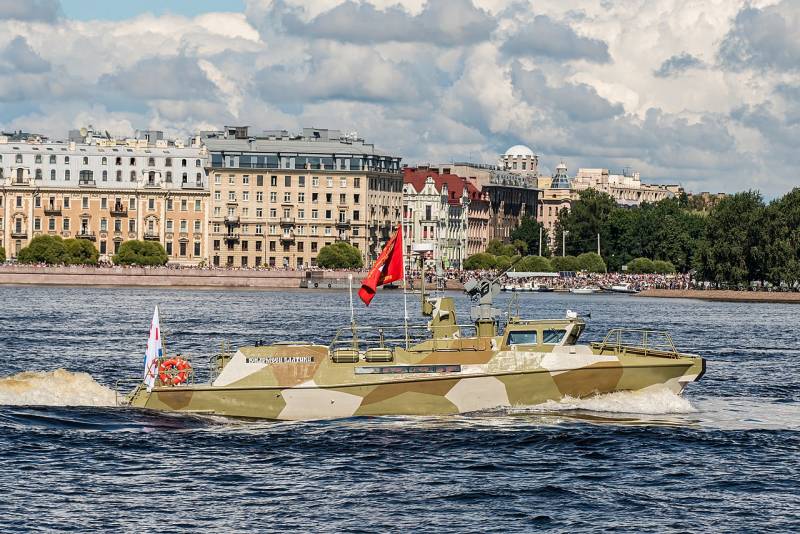
Boat "Yunarmeets Baltic" pr. 03160. Such pennants can move freely along the Gulf of Finland, Neva or Ladoga
In a recent publication by Krasnaya Zvezda, in the context of crossings across the Neva, MRK pr. 21631 Buyan-M is mentioned. Like the ships of Project 22800, they are capable of independently reaching Lake Ladoga and working there. Currently, the DKBF has three Buyans.
The Baltic Fleet has a large number of different missile boats, small anti-submarine ships, boats for various purposes, landing ships and boats, etc. All of them, if necessary, can also go to Ladoga in order to protect against enemy attacks and preserve their combat potential. It is unknown whether ships of 1st and 2nd ranks, such as the destroyer Nastoichivy, patrol ships of Project 11540 or corvettes of Project 20380, can reach Lake Ladoga.
Thus, the Baltic Fleet, if necessary, has the opportunity to withdraw most of its combat units to Ladoga. Due to this, their safety will increase, while the strike potential of the main ships as a whole will not change. They will retain the ability to control a significant part of the region and hit distant targets.
Return to Ladoga
The Russian Navy in general and the Baltic Fleet in particular take into account the peculiarities of the current military-political situation and try to predict its further development. During such processes, negative factors and events receive the necessary assessment, and then appropriate measures of one kind or another are taken. Thus, in response to the current situation and the emergence of new threats, the possibility of withdrawing part of the DKBF forces deep into the country’s territory is being explored.
To date, the first experiments of this kind have been carried out using only two ships. If the events with the participation of the Sovetsk and Odintsovo MRKs are highly appreciated, then we should soon expect similar voyages of other ships and the restoration of the corresponding infrastructure on Lake Ladoga. As a result, the effectiveness of the DKBF will remain at the same level, and the safety of service and combat work will increase.
Information